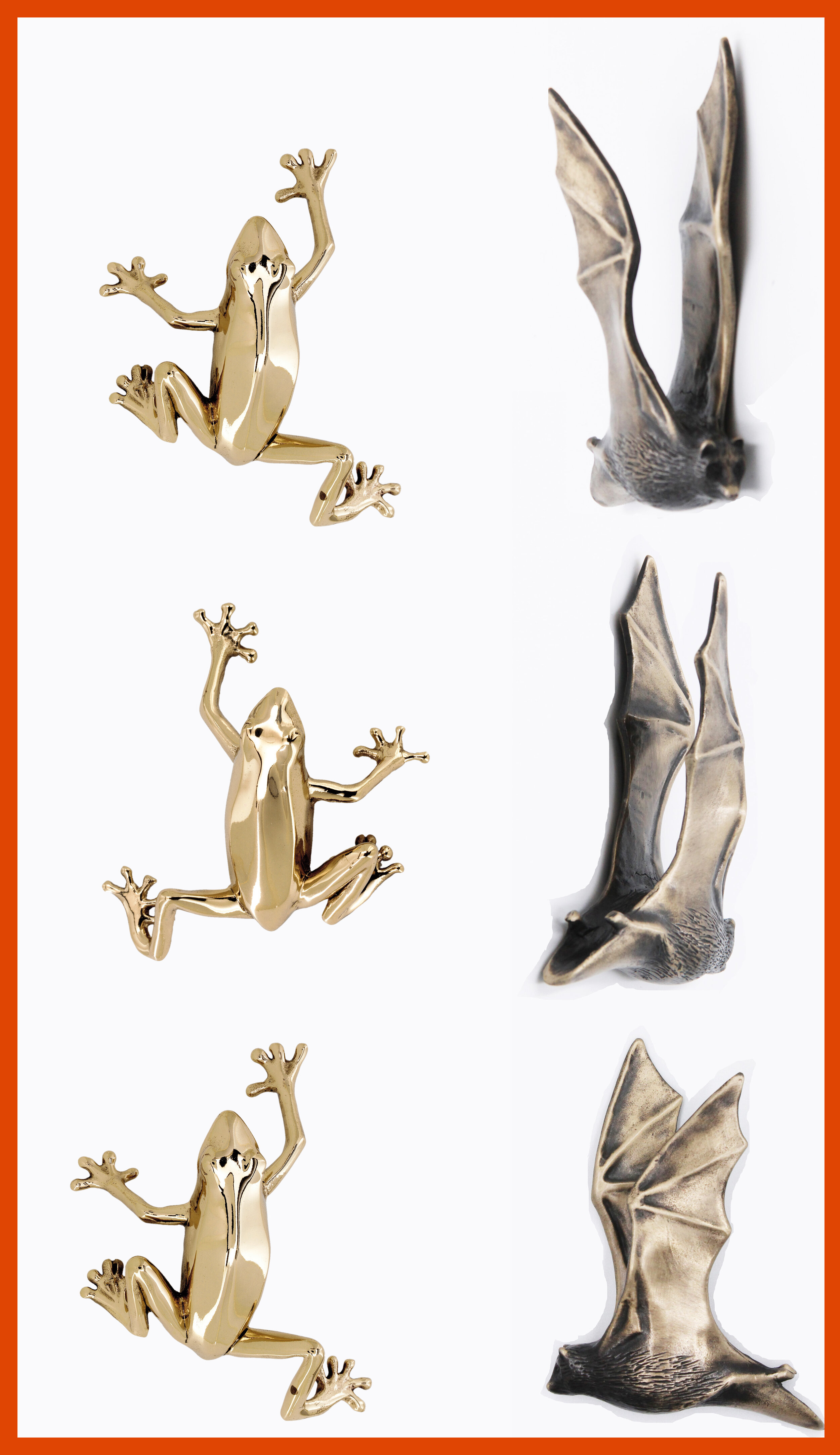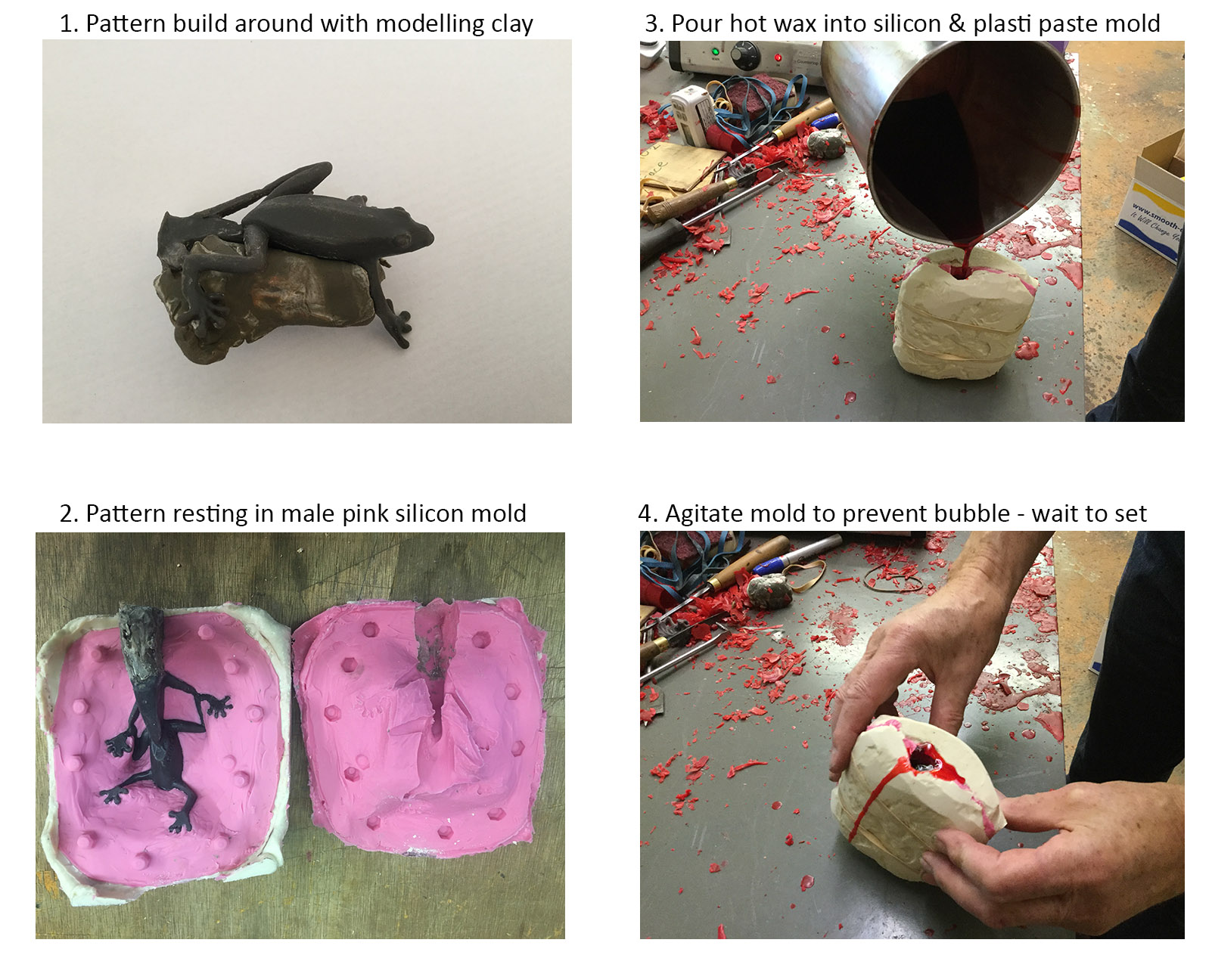Fear not this Halloween our bats will not entangle your hair nor slippery toads crawl up your legs as our creatures are cast in weighty bronze.
Let the witching hour commence!
Gold Cabinet Pulls or Polished Bronze?
When is gold truly gold and when is it polished bronze? This is a tongue in cheek question and the answer reflects (pun intended) the high luster and jewel like appearance of polished bronze.
While we do occasionally gold plate our door hardware and while this clearly adds value to the item, for many, the appearance of gold is what is needed to create an accent to cabinetry.
Bronze is an alloy containing copper and this is what makes it a golden color. Copper and Gold are both elements on the Periodic table Cu and Au respectively and while they are both malleable and were used by early man they differ considerably in terms of scarcity and hence cost. A visit to https://www.jlab.org/ revealed that the “name Copper comes from the Latin Cuprum meaning “from the Island of Cyprus” which is where the Romans obtained the majority of their copper ore. The name gold comes from the Sanskrit word Jval and the Anglo-Saxon word gold.” Gold and bronze are both very soft mediums and in the case of silicon bronze tin and silicon are adding to copper to create a harder more durable alloy.
To create a highly polished surface the casting goes through 3 stages of progressively finer buffing;
First, we buff it using a high strength non-woven nylon disk on a mechanized buffing wheel, as the disk is not woven it is pliable and can buff irregular shapes. The material of the disk contains aluminum oxide a mineral that makes sharp very fine cuts into the surface of the bronze which helps to create consistent brush marks over the entire surface. We use a medium grit disk made by Standard Abrasives.
The piece is then hand polished using a 400-grit fine wet/dry sandpaper.
Lastly, we buff the pull on a cloth buffing wheel. Buffing compound is applied to the edge of the rotating cloth disk and when sufficiently coated the pull is pressed against the edge of the disk to create a high luster.
How to make a simple mold for lost wax casting
Over time all things age and the longevity of a mold will depend on the composition of the mold material and frequency of use. We make a variety of molds some require metal or fiberglass reinforcement and are not ideally suited for home use but others are possible to make at home provided you are patient and dexterous.
Our frog cabinet pulls are a popular item but we still make these by using a simple gravity pour rather than injection method to create the wax replicas for our lost wax castings.
The frog mold is a 2 part mold that is held together by simple peaks in one half of the mold and troughs in the other half mold that act as keys to tie the mold together. The troughs or holes are created using a drill bit or punch which is pushed into the modeling clay that holds the pattern in place. As this is a 2 part mold the skill comes in delicately building up the modeling clay up one half of the pattern without breaking of the small frog digits.
Once the frog is secure in modeling clay and all undercuts have been filled in we apply 3 or 4 coats of silicone rubber with a paint brush, we use Mold Max 30 by Smooth-on. After the silicon rubber is set we reinforce the mold with a more rigid plaster compound called Plasti Paste 11 by the same manufacturer.
Next we make the second half of the mold which will have the peaks that align with the troughs. First we spray on a mold release agent onto the female mold, we use Ease Release 200 by Mann Technologies. We then apply more of the silicon rubber to the mold which will collect in the troughs. We repeat the process described and once we have created a rigid case in Plasti Paste we are ready to start using our mold to create waxes. The release agent allows the 2 halves of the mold to separate, we then can remove the pattern and now we have a hollow space to receive the wax.
Useful sources
https://www.smooth-on.com/
www.moldreleases.com




